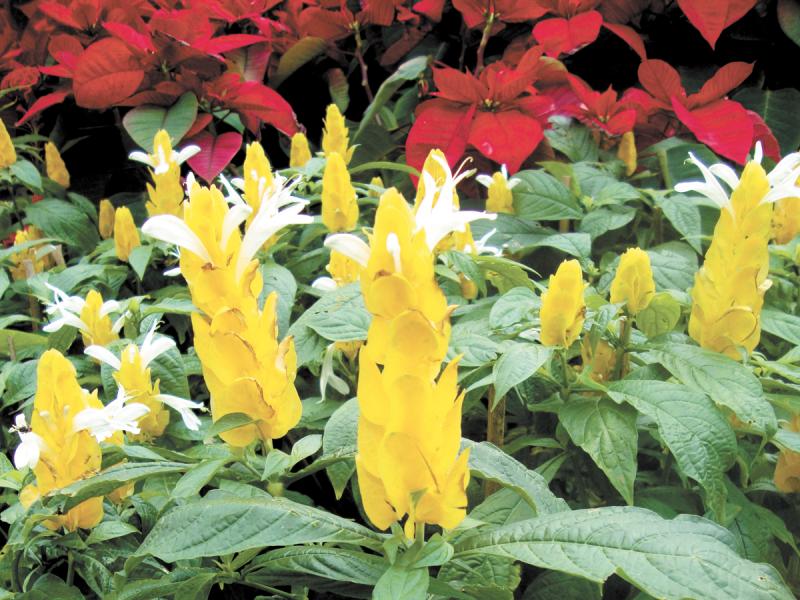Sweetness on a stick - what a great idea. So thought George Smith, a New Haven, Conn., candy maker who in 1908 cooked up hard sugar candy and put it on sticks. He named these treats after his favorite racehorse, and the Lollipop has been with us ever since. Some of these lollipops were so huge they came to be known as all-day suckers.
Gardeners can grow their own lollipops, though these are strictly for show. The Lollipop Flower (Pachystachys lutea) is child's play in that it is not only easy to grow, but almost constantly in bloom. It has spikes of yellow flowers on successive bracts that sport tiny, open-faced white flowers.
These are sometimes called shrimp plants because the flattened flower spikes look like shrimp. There are unrelated plants also called shrimp plants, so when buying a Lollipop plant, be sure you get the real deal, and ask for it by scientific name: Pachystachys lutea. You can often find them in local nurseries and garden centers or by mail from companies such as Logee's Greenhouses (www.logees.com).
Because they flower from the ends of the branches, the more branches you have, the more flowers you get. So cut it back as much as you want, and it will rebound almost magically with renewed growth and blooms. It is best to do the pruning in early spring, but this hardy plant can be cut back almost any time. Make your cuts just above where leaves attach to the stem, cutting back about one-third of the branches. After the flower heads fade, cut them off as well.
As with many houseplants, you can pinch back the growing tips from time to time to make the plant even bushier. As a bonus, the cut stems will root easily for a nearly endless supply of new flowering plants. Best results are from rooting four- or five-inch stems.
Choose a place where your Lollipop plant will get several hours of bright light, but not direct hot sunlight. Pachystachys lutea does best with high humidity, so spritz the foliage with water from time to time with a spray bottle. You can up the humidity by setting your plants on a pebble-filled tray. Add just enough water to the tray so that the pot is above the water, not in it. The evaporating water will gently increase the humidity. Low humidity can make the plants susceptible to attacks by white flies, and often result in the plant dropping its lower leaves.
Pot Lollipop plants in average potting soil. Let the soil dry out between waterings, in particular during the winter months when plants tend to grow slower than in sunnier times. Fully grown Lollipop plants will reach about three feet tall. Older plants tend to get straggly and do best when pruned heavily. You can either repot the plants in the spring, or simply add new potting soil on top of the old soil.
Because they flourish in temperatures between 60 and 80 degrees F, they adjust to almost any indoor room. Feed them with a balanced formula (15-15-15) fertilizer or one specifically made to encourage blooming.
For nonstop blooms, it's hard to beat Pachystachys lutea, your very own all-day sucker.





















































